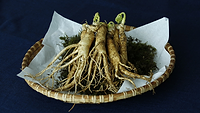Researchers Make Progress on Rapid Viability Assay for Cyclospora

Image credit: Freepik
With funding from the Center for Produce Safety (CPS), a researcher from the U.S. Department of Agriculture’s Agricultural Research Service (USDA-ARS) is leading a project to develop a rapid viability test for Cyclospora cayetanensis.
Parasite C. cayetanensis is uniquely challenging due to difficulties of culturing it in the laboratory and requiring complicated microscopy to confirm it in samples. The U.S. Food and Drug Administration (FDA)-approved real-time polymerase chain reaction (PCR) detection technique is unable to distinguish between viable and non-viable C. cayetanensis.
The inability to tell the difference between live and dead C. cayetanensis leads to produce recalls due to trace amount of the parasite’s DNA, even though the microbe may not be viable.
USDA-ARS’s Asis Khan, Ph.D. hopes to develop a rapid assay with the ability to differentiate between live and dead parasites using the surrogate protozoan Eimeria. Such a solution would allow the produce industry to make better-informed food safety decisions.
Dr. Khan’s co-investigators on the project are his USDA-ARS colleagues Benjamin Rosenthal, D.Sc.; Jitender Dubey, M.V.Sc., Ph.D.; and Mark Jenkins, Ph.D.
Emeria is being used as a surrogate in the project due to its availability, culturability, and genetic similarity to C. cayetanensis, as well as it not posing a threat to human health. The microbe produces infectious oocysts that persist in the environment for months, but viable and non-viable oocysts are indistinguishable with current assays.
Examining Eimeria oocysts at different stages of biological aging using high-resolution microscopy techniques, the researchers discovered distinct granular structures in the non-viable oocysts that were not present in the live oocysts. Additionally, when placed under ultraviolet (UV) light, the researchers observed a fluorescent quality in the granular structures.
The researchers were then able to differentiate between live and dead oocysts using fluorescence-activated cell sorting (FACS), the results of which were validated against an in vivo assay using chicks and 1,000 FACS-sorted oocysts. The oocysts sorted as non-viable through FACS were much less infectious than the FACS-identified viable oocysts.
Next, Dr. Khan sent his findings to University of California–Davis researcher Nitin Nitin, Ph.D., with whom he connected at a past CPS symposium, to develop artificial intelligence (AI) tools for identifying live versus dead Eimeria. The AI model was trained using thousands of FACS images for viable and non-viable Eimeria; eventually, it was able to sort live and dead parasites with more than 98 percent precision.
Additionally, the researchers took RNA from oocysts in different stages of biological aging and identified gene expressions specific to each stage. With PCR screening, the researchers were able to pinpoint biomarkers that could potentially be used to distinguish between live and dead parasites. Validation tests for the biomarkers are underway.
Dr. Khan believes his findings could extend beyond the produce industry and have relevancy for poultry management, as well.
Looking for a reprint of this article?
From high-res PDFs to custom plaques, order your copy today!







